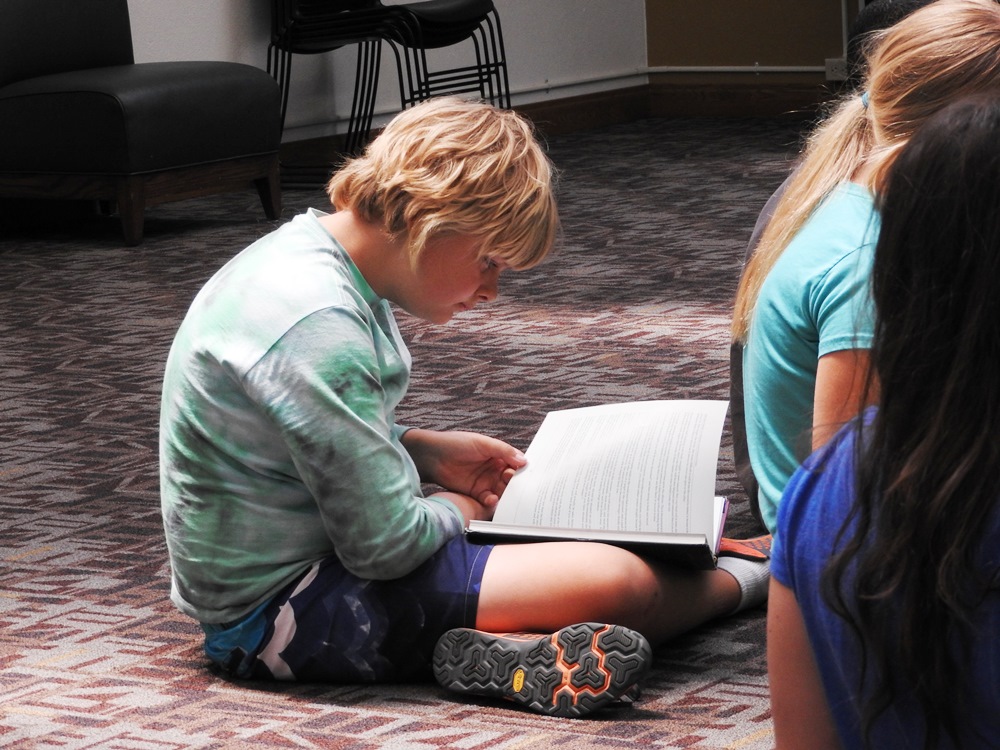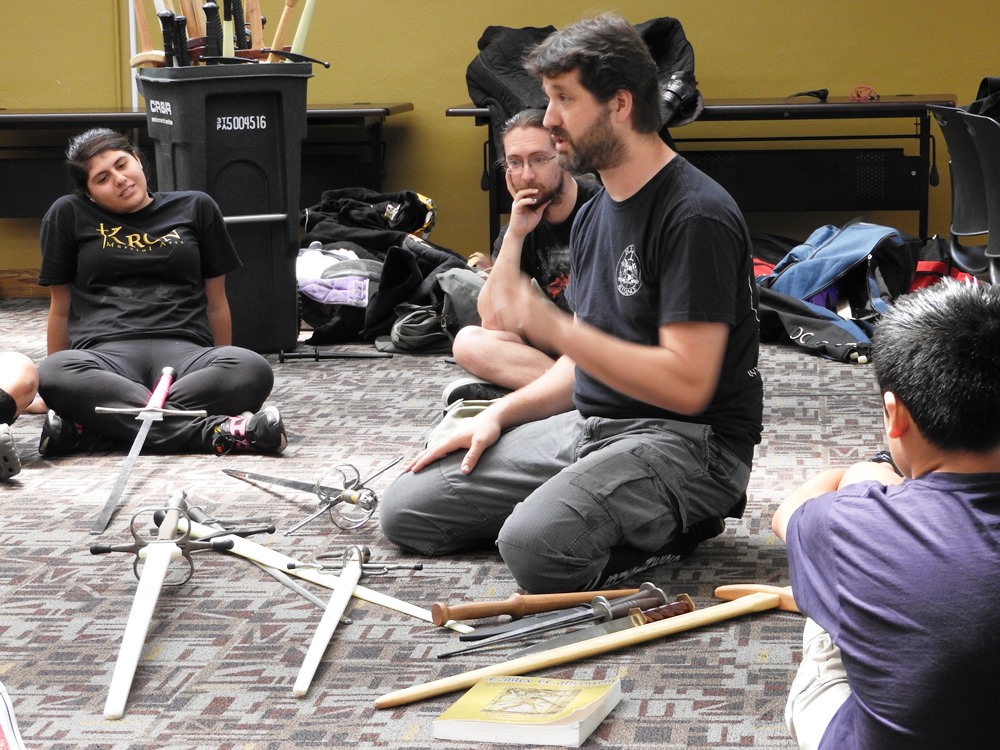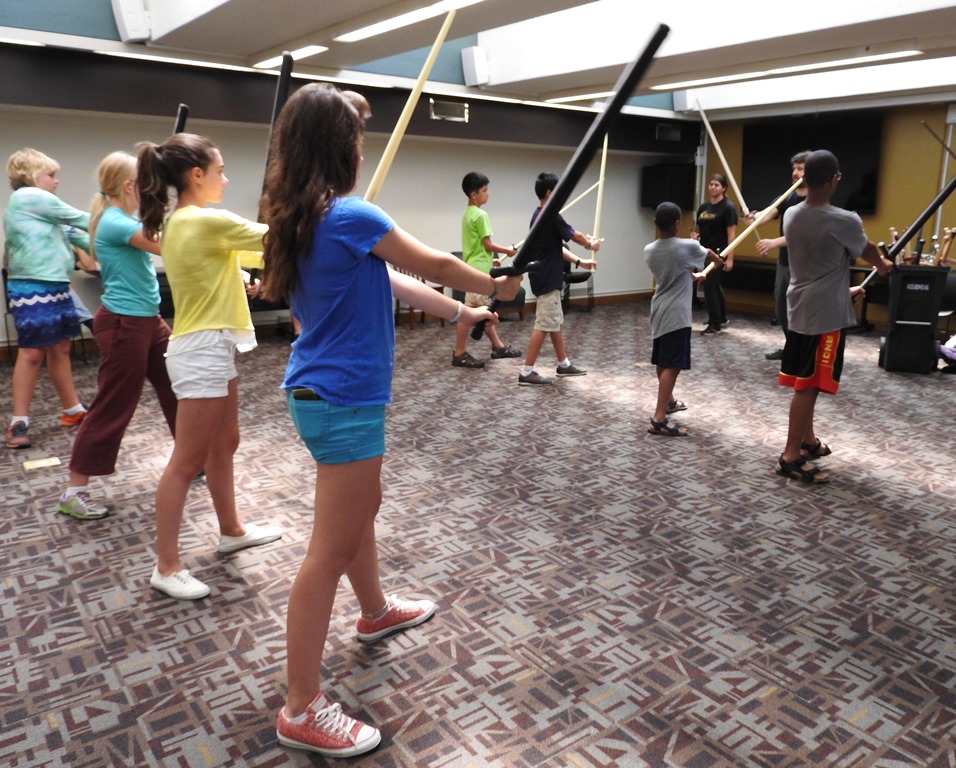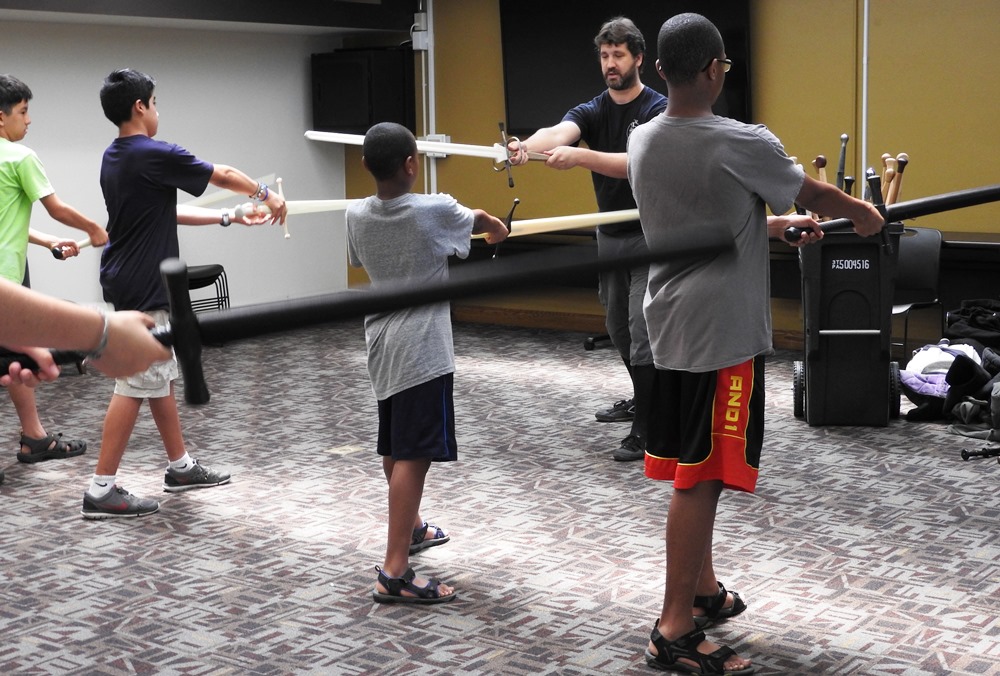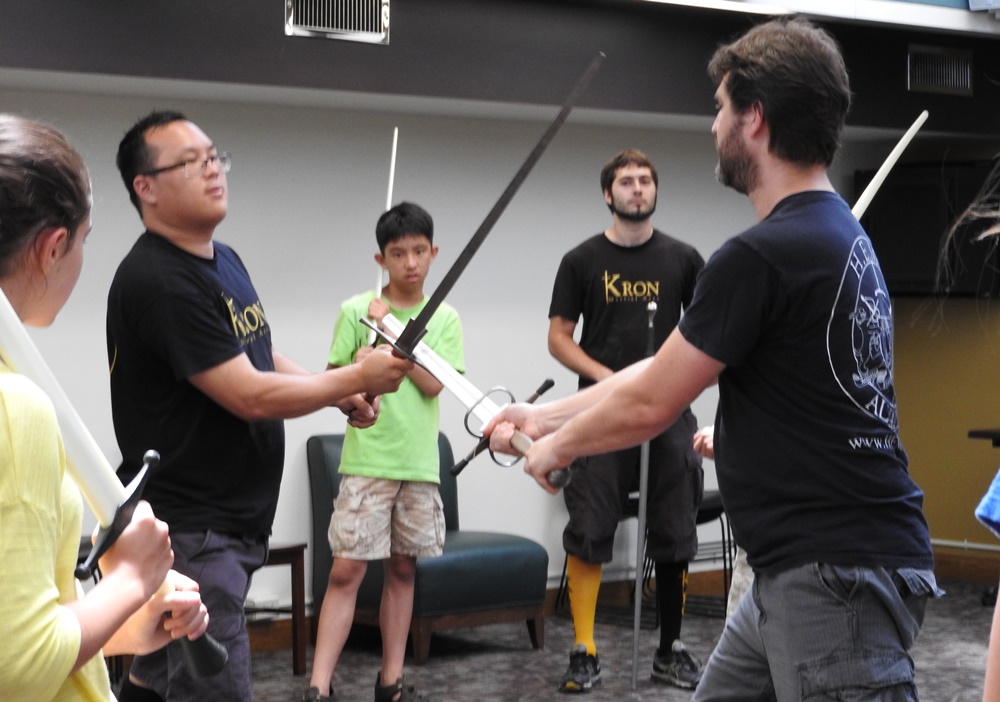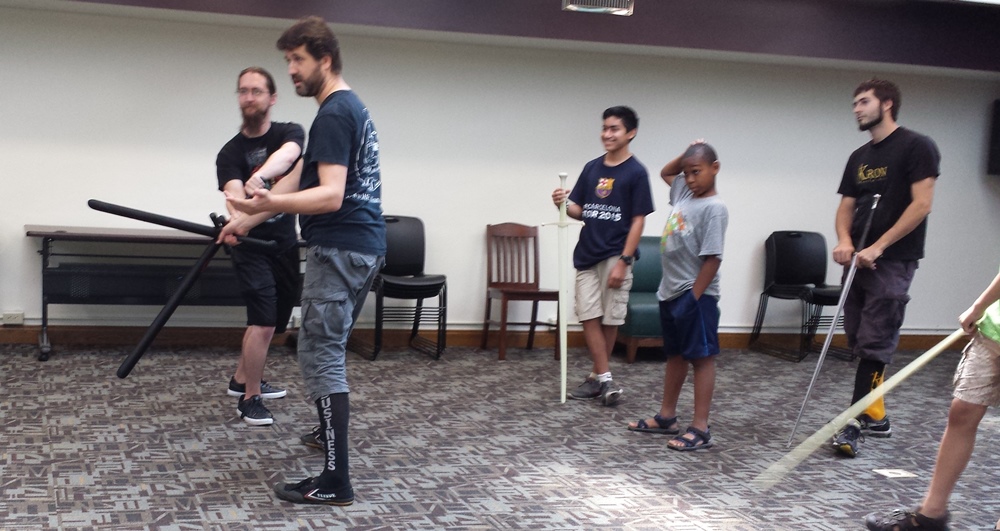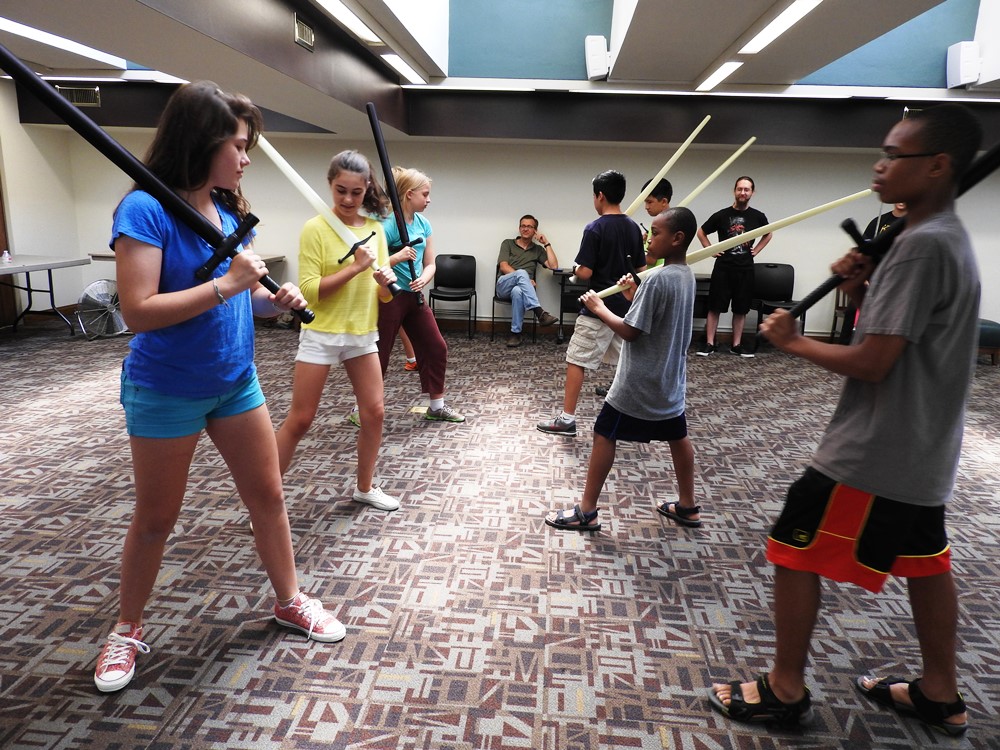
Back by popular demand, the HEMA Alliance presented two medieval combat workshops at our library–one at the La Pintoresca Branch Library on June 18, and another at Central Library on July 25. HEMA works with medieval researchers and martial artists throughout the world to recreate medieval combat as a serious martial art. Our teens got a taste of German and Italian long sword styles, sword and shield, polearms, dagger, and medieval grappling.
Photos by Lucy Wang, teen photographer
Reading List
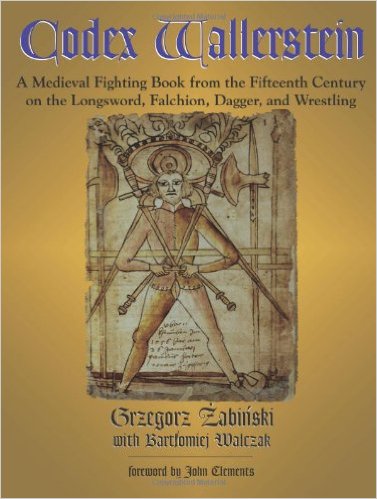
The Codex Wallerstein is one of the best known of the late medieval fencing treatises still in existence. Originally written in Middle High German during the late 14th and early 15th centuries, the Codex Wallerstein has long been available to scholars in microfilm format from Augusburg University. Now with the publication of this book, the text and drawings are available to scholars and martial artists in the original Middle High German, as well as in Modern German and English translations. The codex offers a series of fundamental counters to common attacks, using the longsword, falchion and dagger, as well as the complete system of wrestling techniques. In this work the reader will find a great deal of instruction on thrusting at or closing in against an opponent, expanding Master Johannes Liechtenauer’s art of longsword combat.
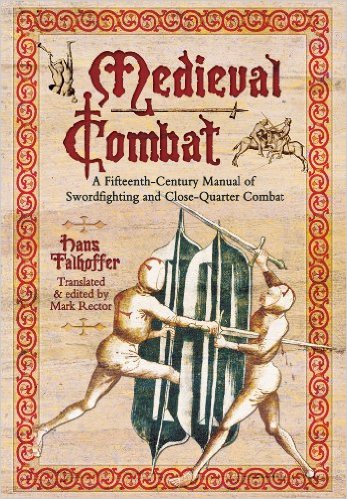
Talhoffer’s professional fencing manual of 1467 illustrates the intricacies of the medieval art of fighting, covering both the ‘judicial duel’ (an officially sanctioned fight to resolve a legal dispute) and personal combat. Combatants in the Middle Ages used footwork, avoidance, and the ability to judge and manipulate timing and distance to exploit and enhance the sword’s inherent cutting and thrusting capabilities. These skills were supplemented with techniques for grappling, wrestling, kicking and throwing the opponent, as well as disarming him by seizing his weapon. Every attack contained a defense and every defense a counterattack. Talhoffer reveals the techniques for wrestling, unarmored fighting with the long sword, poleax, dagger, sword and buckler, and mounted combat.
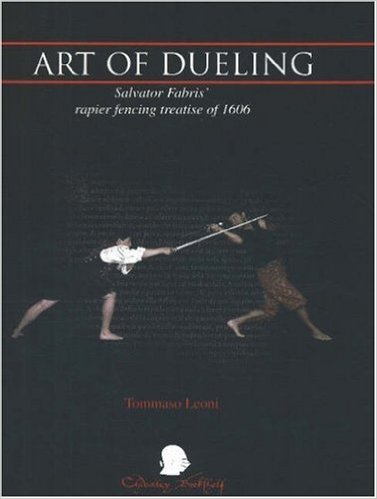
The Italian Rapier has held a special place in the history of European swordsmanship. Famous for generations after his death, Salvatore Fabris became the personal fencing master to the equally famous King Christianus of Denmark. Towards the end of his career, and at the king’s request, the great master set down the sum of his art in clear in a clear, concise manual of footwork, guards, attacks, defenses, and conterattacks with the rapier, used alone or with a dagger or cloak. A landmark work brought to English for the very first time, Tomasso Leoni offers a complete translation that accompanies the 200 17th century engravings.
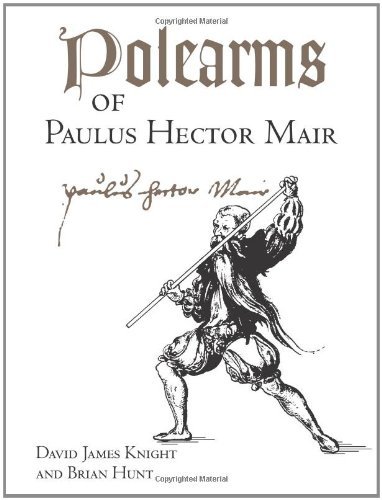
Mair collected a vast combat library, including works by Jörg Wilhalm, Antonius Rast, Gregor Erhart and Sigmund Ringeck, as well as copies of both the Codex Wallerstein and the Königsegg-Talhoffe manuscript. Circa 1540, Mair produced the Opus Amplissimum de Arte Athletica, or Ultimate Book of the Art of Athletics, a massive compendium heavily influenced by the earlier works in his library but surpassing them in content and depth. Today only three complete manuscripts of his Opussurvive in German and Austrian collections. In Polearms of Paulus Hector Mair, authors Knight and Hunt make their contribution to the endeavor that Mair began so many centuries ago. Working from both the German and Latin versions of Mair’s Opus, they present chapters on combat with the poleax, halberd, spear and shortstaff, and lance and longstaff, with text in the original German and Latin, along with the English translation.
You might also like
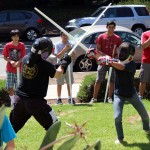
Keywords: Swordfighting

